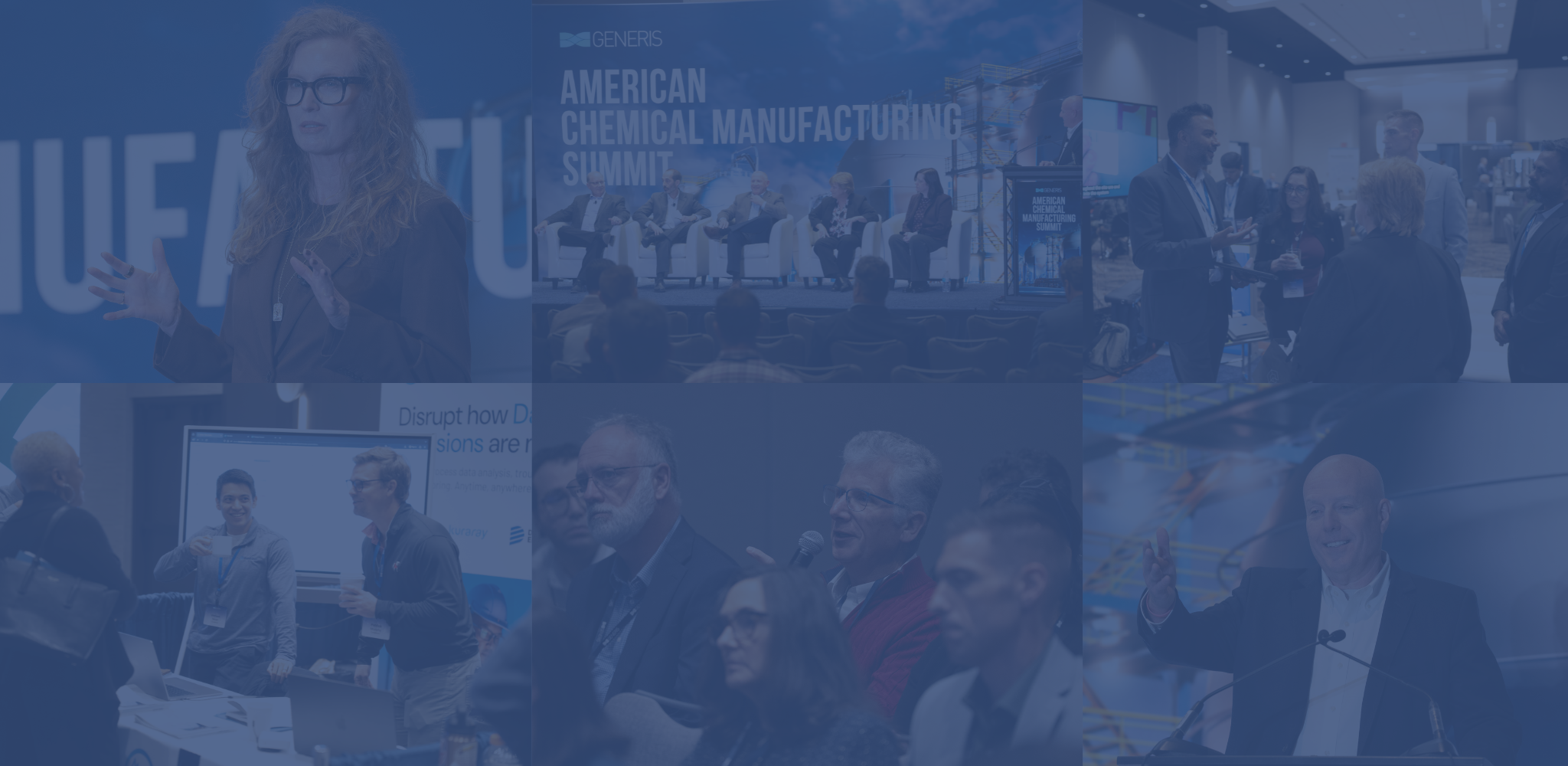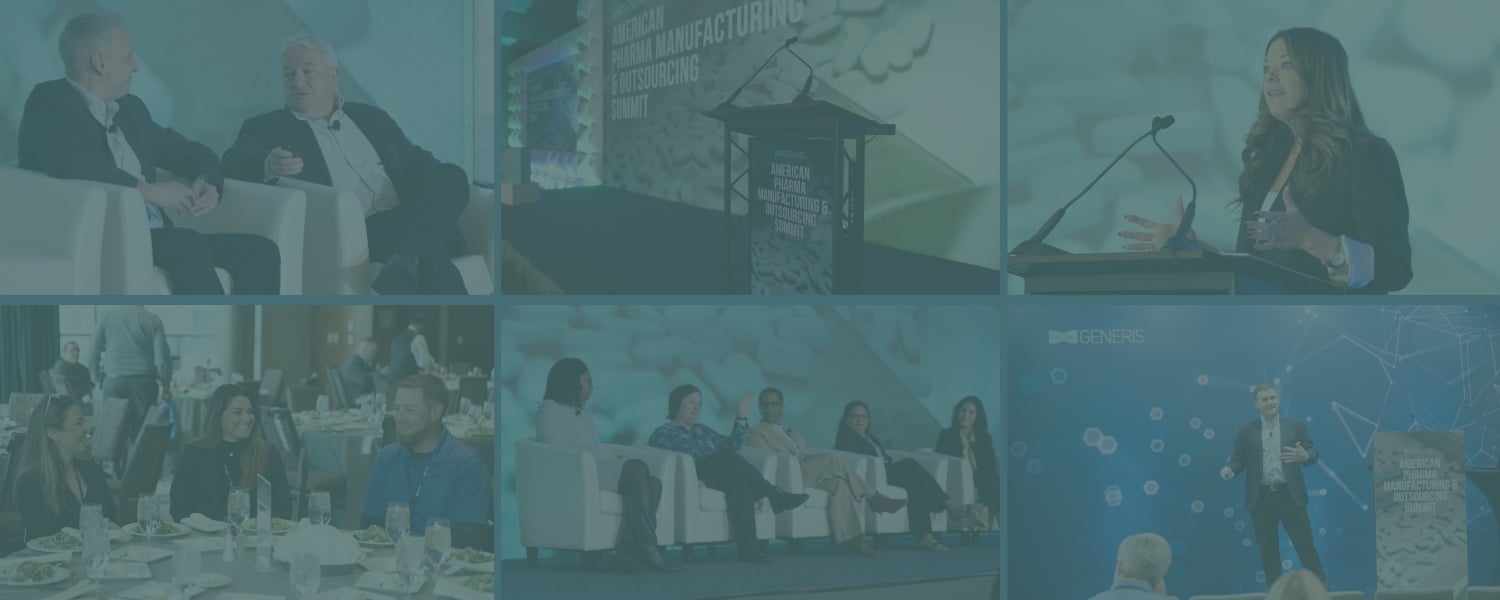In this Speaker Spotlight, Thomas Schamberg, Ph.D., SVP of Supply Chain Excellence at Evonik Industries, will give a preview of his upcoming session at the European Manufacturing Summit titled, "Resilience and Innovation in Manufacturing: Evonik's Journey to Supply Chain Excellence."
Thomas's session will focus on transforming supply chain operations with digital tools and workforce development. Topics include streamlining processes for better customer service, improving sustainability, leveraging AI for inventory optimization, automating demand planning with machine learning, and using digital twins to enhance distribution network performance.
Introduce yourself and describe your role/responsibilities as the SVP of Supply Chain Excellence at Evonik Industries and your journey into manufacturing.
 My name is Thomas Schamberg, Ph.D., and my background is in mathematics. After spending some time working at a university, I transitioned into the energy utility industry, where I worked for roughly 10 years. After that, I joined the chemical industry, and I've been with Evonik since then.
My name is Thomas Schamberg, Ph.D., and my background is in mathematics. After spending some time working at a university, I transitioned into the energy utility industry, where I worked for roughly 10 years. After that, I joined the chemical industry, and I've been with Evonik since then.
Evonik is a specialty chemicals company, and in my current role, I lead the Corporate Supply Chain Excellence function. This role involves overseeing both governance and excellence within the supply chain. The governance part is straightforward, focusing on compliance and processes, while the excellence part is about driving Evonik's transformation toward the supply chain maturity and capabilities that we believe are necessary for future success.
I am based in Germany at our headquarters in Essen.
Supply chain disruptions are becoming increasingly common. How do you leverage enhanced visibility to respond quickly and effectively to unexpected challenges?
Like many others, my journey into supply chain management was somewhat accidental and unplanned. My career path didn't follow a straight line, and I often found myself doing things I wasn't specifically trained for. As a mathematician by background, I never truly worked in my field beyond my time during my PhD. My move into supply chain management came in 2017 when I was asked to build an in-house consulting team for supply chain management at Evonik. At the time, I didn't have much experience in this area, but I accepted the challenge with one condition: we had to hire the right talent from the market.
The chemical industry, even Evonik, hadn't historically placed much emphasis on supply chain management. A decade or two ago, it wasn't even considered worth mentioning because the focus was entirely on production—creating innovative products that others couldn't. Supply chain management wasn't a priority. However, that changed due to two key factors: globalization and the growing commoditization of our products, even within specialty chemicals. Suddenly, supply chain management became essential.
To effectively drive this transformation, we needed the right skills. Since the company didn't have a strong foundation in supply chain management, we hired externally. By around 2020, we had recruited talent from universities, consultancies, and other industries. With this team, we began the process of enhancing our supply chain operations.
After about three years, I had the opportunity to discuss our progress with one of our board members. We realized that if we were serious about accelerating the transformation, we needed to change the supply chain structure itself. This led to the creation of the central supply chain management group, which I currently lead. It was the first time the company had a centralized function dedicated to supply chain management, with a focus on governance and excellence.
Governance, especially within supply chain management, was a completely new concept for the company. There was a lot of initial confusion—were we going to act as the "police" of supply chain management? Obviously not. But we had to define our role, and that's where our journey began. This transformation really started to take shape toward the end of 2019 and the beginning of 2020.
Can you share an example of how closer collaboration with suppliers led to a significant improvement in your supply chain responsiveness?
Yes, absolutely. Disruptions are, unfortunately, becoming the new normal. These days, we don't wonder if a disruption will occur but rather when, where, and what the impact will be. It could be anything from a labor strike in Belgium or France to an earthquake, an ice storm, or even piracy. You name it—we've seen it all.
The key challenge, especially for a global production network like ours, with over 150 production sites around the world, is managing a complex and lengthy value chain, particularly in the specialty chemicals sector. In this kind of business, the number one priority is identifying disruptions as quickly as possible. Transparency is critical here.
You might ask whether it's possible to fully prepare for all the unknown disruptions. The reality is, most likely not. Even if we could, the cost would be prohibitive. So, the solution lies in setting up agile teams. These teams are activated as soon as a disruption is identified and are tasked with resolving issues as quickly and efficiently as possible.
To enable this, transparency is essential—and that comes from both data and strong networks. Over the last few years, we've worked on both fronts and while we're improving, we're not yet where we need to be. There's still a long road ahead. While we can't prevent things like thunderstorms, we can prepare our plans to minimize damage, not just to our production sites but throughout our supply chain.
The chemical industry is highly interlinked. Many of our suppliers are also our customers, which makes close collaboration even more critical. If you look at the value stream in chemical production—starting with crude oil, processed through a cracker to produce base chemicals, and then further refined into other products—it's clear that transparency and close cooperation between customers and suppliers is essential.
In this environment, the key is sharing planning data as much as possible but only sharing what's necessary to protect proprietary processes. For example, sharing data isn't as risky in base chemicals, where the production process is well understood and driven by economies of scale. However, in specialty chemicals, where know-how is critical, we must be more selective with the data we share.
The earlier our customers tell us what they need, the easier it is for us to plan, and the same is true for them. In some cases, this collaboration forms a complete loop. For example, we have product lines where railcars continuously move products between sites for further processing, and the same clean railcars return to cycle the products back to the customer. This type of closed-loop collaboration highlights the importance of transparency and strong partnerships in improving supply chain responsiveness.
"The key challenge, especially for a global production network like ours, with over 150 production sites around the world, is managing a complex and lengthy value chain, particularly in the specialty chemicals sector. In this kind of business, the number one priority is identifying disruptions as quickly as possible. Transparency is critical here."
Looking forward, how do you envision Digital Twin technology evolving, and what potential does it hold for further revolutionizing supply chain and manufacturing operations?
I believe the digital twin is more than just a buzzword, though it may not meet the high expectations that some initially had. At its core, the essence of a digital twin is about having accessible data on one or multiple platforms. Once you have that data, you can start leveraging it, which is absolutely crucial, especially when dealing with a complex supply chain network like ours.
Our network is intricate and often faces various disruptions, whether due to global challenges or internal complexities. Having access to data enables us to run scenarios and simulations, helping us better anticipate and manage these disruptions. We've begun leveraging this by integrating planning data across all our business lines.
As a company, Evonik has multiple business lines—around 15—and within those, real business decisions are made at the product line level. To bring this to a more mature planning level, we introduced a single planning platform, in our case, IBP (Integrated Business Planning). Once all the data is available in one place, it becomes easier to work on improvements like forecast accuracy. And when you have a model that works, deploying solutions across the board becomes much more straightforward.
In short, for me, the digital twin is all about ensuring data accessibility and, secondly, speeding up the deployment of digital solutions based on that data. The more accessible and integrated the data is, the better equipped we are to respond quickly and optimize our supply chain and manufacturing operations.

How are data analytics and AI-driven forecasting being used to optimize inventory levels and reduce waste in your supply chain?
First and foremost, you need accessible data. Once you have that, you can start leveraging data analytics and AI. I believe we are one of the first chemical companies globally to not only define but also implement a unified planning standard. The key benefit of having a standardized system is that it allows us to access and work with the data effectively.
In the beginning, the data may not be fully reliable as you're just starting to work with it, but over time, as you refine the system, you can explore AI-based options. That said, I think it's important to demystify AI. In most cases, we're not talking about large language models or generative AI. The datasets we work with aren't large enough to train those kinds of models properly, especially since we don't have millions of end customers generating data like other industries do.
Our supply chain is quite different in that we know our customers and suppliers well, and they know us well. So, while AI has great potential, it's likely to take longer before large language models become widely applicable in our industry. In the meantime, we are using machine learning, which works effectively for our needs.
One thing I used to tell my students when I taught statistics at university is that every forecast is, to some degree, a lie—because no one can truly predict the future. However, the goal is to create robust forecasts that increase the likelihood of getting a good estimate. The better your forecasting, the more stable your production can be.
That's one of our biggest levers—improving our forecasting accuracy. If we could predict everything perfectly, it would be easy to optimize inventory and reduce waste. But since that's not the case, we also need to maintain agility and robustness in our systems.
The higher our planning accuracy, the closer we get to the ideal situation: knowing exactly what will happen, allowing us to plan in the most cost-efficient, environmentally friendly, and waste-free way possible. Of course, this is not the reality we live in, but AI-driven forecasting definitely helps us move closer to that goal.
How can manufacturers balance the often higher costs of sustainable materials with the need to remain competitive in the market?
That's a fundamental question, and it's not easy to answer quickly. We could discuss this topic for hours. When you look at global markets—and we are a global player—there are different regulations in place. For example, I was at a large conference in the Middle East last year focused on transportation, with around 4,000 participants, mostly from Asia and the Middle East. Many were unfamiliar with concepts like Scope 1, Scope 2, and Scope 3 emissions because sustainability isn't as high on the agenda in those regions compared to Europe.
This leads to significant differences, especially in terms of energy costs and carbon emission penalties. However, I strongly believe this will change. While Europe may have started implementing stricter regulations, other regions will eventually follow, closing the gap. The exact timeline or details are still unclear, but it's a challenge that the entire industry will have to address sooner or later.
![]() For us, this presents a major challenge, especially regarding investments in sustainable technologies. Some of these technologies have been around for a while, but until recently, there wasn't a solid business case for implementing them. We, like many other companies, need to sell products, remain profitable, pay our bills, and support our employees. If there's no business case, it's hard to justify the investment.
For us, this presents a major challenge, especially regarding investments in sustainable technologies. Some of these technologies have been around for a while, but until recently, there wasn't a solid business case for implementing them. We, like many other companies, need to sell products, remain profitable, pay our bills, and support our employees. If there's no business case, it's hard to justify the investment.
However, the situation is changing—not only due to regulations but also because of rising energy costs and global events like the war in Ukraine, which have shifted the economics. Now, many of these technologies suddenly have a viable business case. The challenge now is to find the right sequence for implementing these solutions while also identifying markets that are willing to pay for the higher cost of sustainable products.
In short, the global chemical industry is undergoing a massive transformation. It's difficult to predict exactly how this will play out, but there's no avoiding it. The chemical industry is often referred to as the "industry of industries," meaning that while most consumers don't buy chemical products directly, these products are essential for everything else they do buy. Without the chemical industry, there can be no successful Green Deal or sustainable transformation.
We are working intensively to find solutions, but the global conditions we face are complex and challenging. Nearly all great innovations have their roots in the chemical industry. For example, the iPhone's touchscreen wouldn't exist without the chemicals behind it. So, while the chemical industry may not always get the credit, it is critical to many of the innovations we rely on today.
Which aspect of the European Manufacturing Summit are you most eager about?
What excites me the most is the opportunity to exchange ideas with experts. There's so much we can learn from each other, and my expectation is that these environments encourage open and honest discussions. We're not talking about company secrets or intellectual property but about sharing best practices, especially when it comes to addressing big challenges like sustainability.
Beyond our professional lives, we are all human beings, many of us with children, and we're eager to play a role in creating a better future for the next generation. Speaking for myself, I feel a responsibility in my role to contribute meaningfully to this transformation. It would be a missed opportunity not to use the platform I have.
In the last five years, I've met people across industries and around the world who share the same sense of urgency when it comes to supply chain management and sustainability. Coming together with such experts is always inspiring. The challenge, of course, is that after these events, your head is buzzing with new ideas. The key is prioritizing which ideas to bring back into your daily work because time and capacity are limited.
I look forward to these exchanges, and I'm always eager to implement new ideas and reconnect with these experts the next time we meet.
We sincerely appreciate the valuable insights provided by Thomas Schamberg, Ph.D., in this blog post. His expertise will greatly enhance our discussions at the European Manufacturing Summit. We are eagerly anticipating his upcoming session, "Resilience and Innovation in Manufacturing: Evonik's Journey to Supply Chain Excellence," which will take place on 12-13 November 2024 in Düsseldorf, Germany.
%20(1).png?width=773&height=112&name=Generis%20Logo%20full%20Colour%20(Large)%20(1).png)




